How to Press and Preserve Seaweed
 Artist Karen Robertson, known for her nature-inspired designs, shows how to transform seaweed into artwork that will remind you of the ocean's beauty for years to come.
Artist Karen Robertson, known for her nature-inspired designs, shows how to transform seaweed into artwork that will remind you of the ocean's beauty for years to come.

 We are so thrilled to introduce another post from one of our Advisory Board members. We'll be running regular columns about inspiration and gardening tips from our advisory board throughout the year. (If you missed it, some of our past columns have include how to plant dahlias, by Frances Palmer, and creating a container cutting garden, by Saipua, aka Sarah Ryhanen.)
We are so thrilled to introduce another post from one of our Advisory Board members. We'll be running regular columns about inspiration and gardening tips from our advisory board throughout the year. (If you missed it, some of our past columns have include how to plant dahlias, by Frances Palmer, and creating a container cutting garden, by Saipua, aka Sarah Ryhanen.)
Artist Karen Robertson creates beautiful works of art using materials from nature, often drawing her inspiration from the sea, incorporating starfish, sea fans, and seashells in her pieces. (Be sure to check out her Garden Design Advisory Board member page and gallery to learn more about her work and to read our Q&A with Robertson.)
We are so happy that she offered to share with us her techniques for pressing seaweed to create your own lovely artwork—a wonderful way to keep memories of a summer visit to the ocean in your house all year long.—Claire Lui

Materials
1. seaweed
2. 140lb watercolor paper
3. paper towels
4. rectangular bucket, filled with several inches of water
5. weed screen, weed barrier cloth, or other cloth mesh
6. an artist's brush
7. toothpicks or tweezers
8. corrugated cardboard
9. sheets of wood
10. bricks, heavy weights, or plant press
To begin:
1. Gather, sort, and carefully rinse desirable and interesting seaweed specimens. Soak the seaweed in cool, clean water.
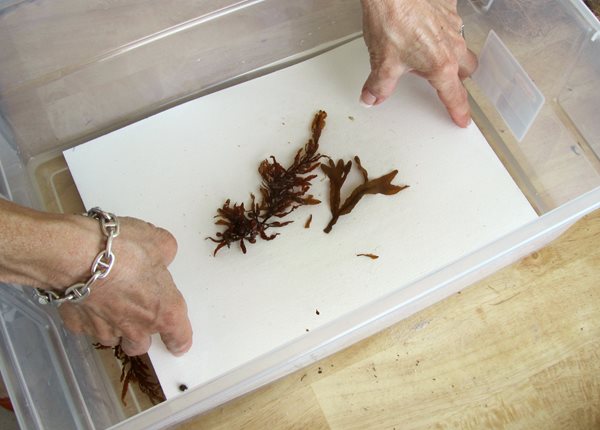
2. Empty the bucket and fill it with 1/2" of cool water; slide sheet of watercolor paper into the tub.
3. Place a strand of seaweed on the paper, underwater.

4. Arrange the seaweed in a pleasing formation.
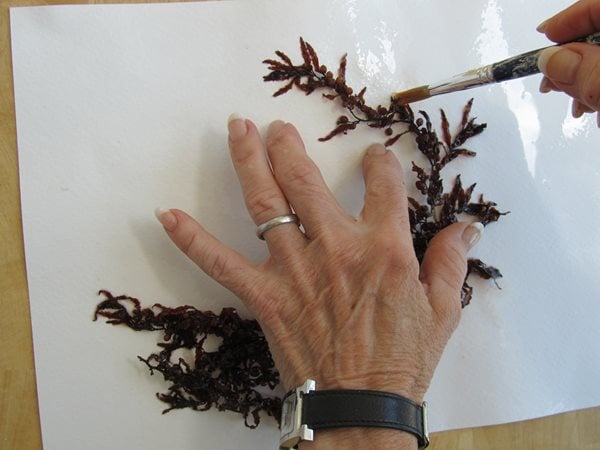
6. Lift the paper from water, carefully tilting paper to drain-off water.
7. Spread and arrange seaweed using fingers, small brush, toothpick, or tweezers.

8. Remove any stray pieces.
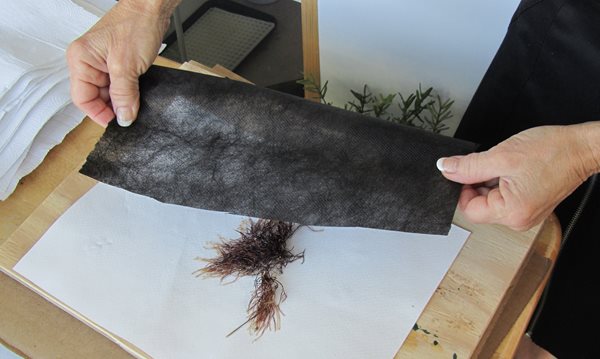
9. Cover with cloth mesh. (I use gardener's weed screen cloth, but any other cloth mesh fabric should work as well.)

10. Carefully place the paper with the seaweed on it between sheets of corrugated cardboard. You can make several layers, alternating cardboard and seaweed/paper, before placing these layers in between two sheets of wood, with the wood serving as the outermost slabs of the "sandwich."
11. Apply weights on top. A few bricks or a heavy cement pot will work, or use a hand or plant press, if you have one.
12. Let dry overnight. Place a small fan at the edges to help drying.
13. Check layers and replace wet cloth overlay, if needed. Thicker strands may take several days to dry.
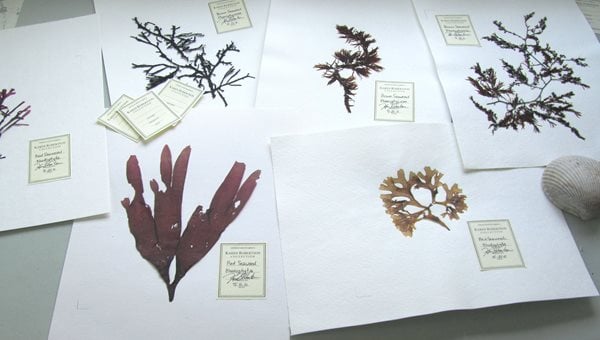
14. Uncover the sheets and separate each sheet carefully. Remove mesh cover from each sheet. Seaweed will naturally stick to paper. Use glue to affix any loose edges.
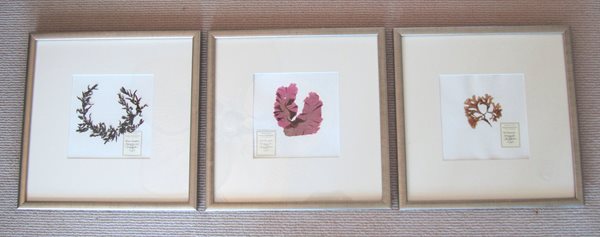
15. Mount to matte board or frame under glass.
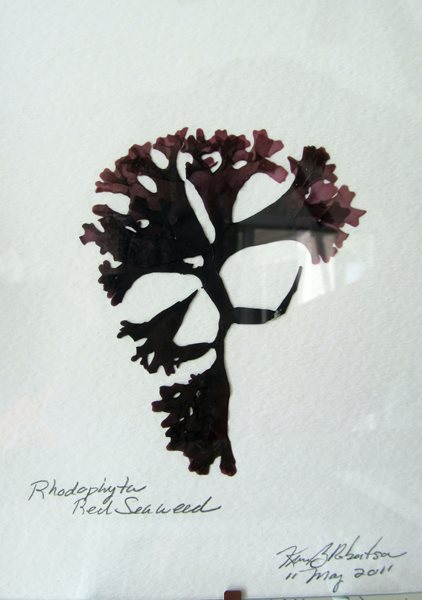
You can see more of Karen Robertson’s work at karenrobertson.com.
